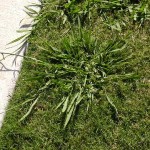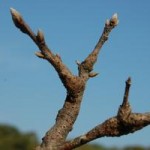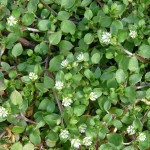
Spring is finally here! And so are the weeds. We have been receiving numerous phone calls about a weed creeping into beds and lawns. It’s pretty, but it just doesn’t belong there is a typical comment. The offending weed is common chickweed. This mat forming winter annual is found through out North America. Common chickweed has a shallow root system so it is easily pulled out. Unfortunately, the entire plant must be pulled out in order to prevent it from popping up again. Common chickweed can be controlled with vegetation control sprays and a pre- emergent weed control. A 1′ thick layer of mulch or wood chips will help to prevent break through. If you prefer an organic approach, ordinary household vinegar works wonders. Just as with non-organic products, be careful not to spray other plant material as they too, will be killed off or damaged from the overspray.
]]>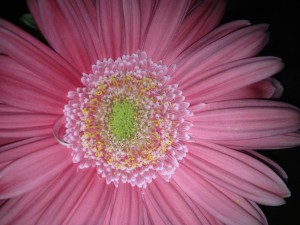
Brighten up your day!
Mother’s Day is coming and one of the most popular gifts is flowers. I love cut flowers and potted plants. One of my favorite is the Gerbera Daisy. I was daunted by the thought of growing this South African Native but have found them to be surprisingly low maintenance and prolific. Gerberas come in a kaleidoscope of colors from muted pastel pinks to saturated coral and red tones. Gerberas like bright light (mine are thriving in a sunny window with fluorescent lights above) They do not like temps above 70 degrees and during blooming need to be kept evenly moist. Between blooms, plants should be allowed to dry out slightly before watering. The flowers are very long lasting both on the plant and off. A single Gerber bloom in a bud vase is a fun festive pick me up for any spot that needs a little brightening up.
Gerbera plants are also a great value. At about $4 for a 4” pot, you can make mom a basket of beauty that she can enjoy for weeks indoors and then plant outside for summer enjoyment.
Another great value is lawn service from The Greenskeeper Lawn, Tree & Shrub Service. What mom wouldn’t love the gift of a lush, green lawn? Call us to surprise your Mom with the gift of lawn care.
]]>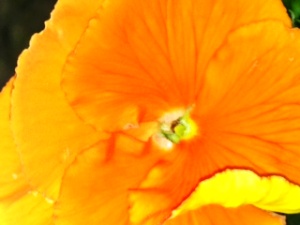 Many gardeners lament that they love pansies but think they aren’t worth the cost or effort. They are great for early spring color in planters and window boxes but it seems just when they are at their finest, the summer annuals are available and ready for planting.
Many gardeners lament that they love pansies but think they aren’t worth the cost or effort. They are great for early spring color in planters and window boxes but it seems just when they are at their finest, the summer annuals are available and ready for planting.
But pansies are not just for springtime anymore! With some careful planning, you can get 3 seasons of enjoyment from what most of us think of as merely a spring annual. Every March I plant my window boxes with pansies in a variety of colors. While I am partial to the Watercolors Mix, a paintbox of muted and bright tones, in recent years I have mixed in an extra flat dof Delta Orange, a sunny, golden orange and Matrix Blue with Blotch , a deep lavender with a striking purple and yellow center. From March through May we enjoy the burst of color they provide against the emerging spring landscape. .
In May, when tender annuals are safe to put outside, I carefully dig out the pansies and simply relocate them to their summer home. At my house, it’s an afternoon shade flower bed that cries out for color from something other than impatiens. With careful pinching back and fertilizing, my pansies bloom and provide gorgeous tones throughout the summer.
If that wasn’t enough to convince you of the versatility of pansies, in late summer, when the summer annuals are starting to peter out, I dig up the pansies and bring them back to their former spring home. The cool temperatures of are perfect for pansies! The Delta Orange and Matrix Blue are a wonderful compliment for fall crops and the vivid tones of autumn.
So if you are thinking that pansies are just a short term spring time investment, think again. With a little care, pansies can enhance the beauty of your home spring, summer and fall- and this year, they were even blooming all winter.
]]>